World Cup 2010 South Africa
Tuesday, 8th June 2010 by Ian Brown
The 2010 FIFA World Cup begins Friday in South Africa, with 32 national teams competing for football's crowning glory. As the first African nation to host a World Cup, South Africa has constructed or upgraded ten stadiums at a cost of more than R8billion (over a billion dollars or euros), with the focal point being Soccer City in Johannesburg.
With a capacity over 91,000, this is the largest stadium in Africa. It originally opened in 1989 and has hosted numerous important events, including the 1996 African Cup of Nations, Nelson Mandela's first speech after his release from Robben Island prison, and the funeral of assassinated apartheid resistor Chris Hani.
Soccer City will host the opening game between South Africa and Mexico, the final, and 6 other games. It has undergone significant upgrades for the tournament, including a new exterior design based on traditional African clay pots, with lights added to simulate fire beneath the vessel. Today's launch of Street View for South Africa arrives just in time to provide us with an excellent exterior view.
And for the very first time, Street View takes us inside the stadium! We can see that the orange seats are punctuated by ten black lines, which at first glance appear to be random. In fact, nine of the lines point towards the other stadiums being used in this World Cup, while the tenth points towards the Olympic Stadium in Berlin, host of the 2006 tournament. These lines are echoed by lines of windows in the exterior design.
The updated Google satellite imagery shows the stadium complete and work progressing on a number of nearby facilities, which one assumes will be used by media and organisers of the event.
We can also see this building with a soccer ball-shaped roof, which is the home of the South African Football Association and the host committee for the World Cup.
Street View reveals that the ball-roof is not quite as round as you might expect of a tournament-quality ball.
In Durban, a short distance from the beach and the Indian Ocean, Moses Mabhida Stadium is one of five newly built venues, holding 70,000 spectators for each of the 7 scheduled games.
The arch spanning the stadium is somewhat similar to the one at the new Wembley Stadium in London, and is an attraction in its own right. The north end has a funicular to carry people to the viewing platform at the top, while more adventurous visitors can climb the 550 steps on the south side.
The truly brave (or foolhardy?) can take the quick way down in the form of a bungee swing, as seen in this YouTube video, which is allegedly "the world’s only stadium swing and the largest swing of any kind anywhere".
South Africa is unique in that it has three capital cities1. Cape Town, the legislative (parliament and government) capital has the third largest stadium - the newly constructed Cape Town Stadium - which has a capacity of 69,000.
Eight games will take place here, including a semi-final, but sadly this is one of only a couple of stadiums which weren't visited by Street View, so we have to be content with a look from a nearby road.
Pretoria is the executive (administrative) capital. Its 51,000 capacity Loftus Versfeld Stadium needed minimal upgrades to meet the standards necessary for the six early-round games it will host. Street View shows it still set up for rugby games.
Bloemfontein is the country's judicial (legislative) capital. The Free State Stadium will also host six early games, but required significant additions, including new floodlights, and a second tier of seating which brings the capacity to 48,000. The closest Street View access is the barred gate at the entrance to the pitch.
In addition to Soccer City, Johannesburg (the country's largest city) features Ellis Park Stadium which dates to the 1920s, but which was modernised in the 1980s. It is most often used for rugby (as shown by Street View) and hosted that sport's World Cup Final in 1995. Temporary seating will bring the capacity to 65,000 for this tournament where it will host seven games.
This stadium has a black moment in its history - in 2001, more than forty people died as a result of a stampede when an estimated 120,000 people (more than double the official capacity) crowded into the stadium during a football match.
The third new venue constructed near the ocean is Nelson Mandela Bay Stadium2 in Port Elizabeth. The petal-like roof design has been nicknamed The Sunflower by locals. Eight games will take place here, before almost 50,000 people.
The other two new stadiums are both in the north-eastern part of South Africa, and each will have a capacity around 45,000 for the 4 first-round games they will host.
Polokwane's venue was named for Peter Mokaba, former leader of the ANC's youth league. The pitch looks in terrible shape on the satellite image, but Street View reassures us that it is in better condition now, with the sprinklers running as we enter the stadium!
Nelspruit's Mbombela Stadium is under construction in Google's satellite images, but we can see the distinctive and vibrant seating patterns. Street View allows us to clearly see the roof supports which were designed to resemble giraffes, a nod to nearby Kruger National Park3.
The final venue on our tour is Royal Bafokeng Stadium in Phokeng4. Owned and operated by one of South Africa's many tribal groups, this 11 year old stadium had to be expanded to a capacity of almost 45,000 for the World Cup, when it will host six games and be the base for the England squad.
More information about all these venues can be found at Wikipedia and the tournament's official site.
Enjoy the World Cup everyone; may your team (or the team you've been allocated in your office sweepstakes) win!
-
This piece of trivia is almost worthy of its own Google Sightseeing post! There are a number of countries with two capitals, but South Africa appears to be the only one with three. ↩︎
-
Note that the venue is named for the municipality it is in, and not specifically for the former president himself. ↩︎
-
Where we found a wild Elephant earlier on today! ↩︎
-
More often associated with the larger community of Rustenburg. ↩︎
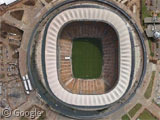

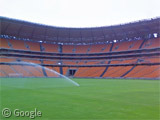
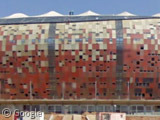
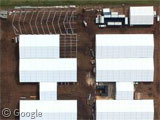
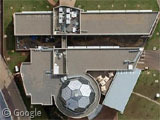
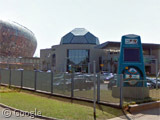
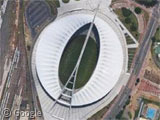
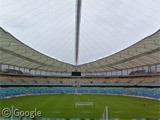
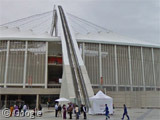
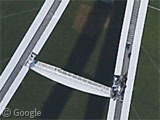
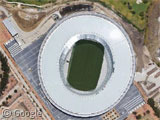
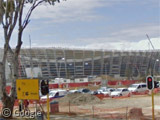
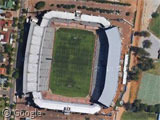
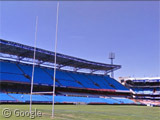
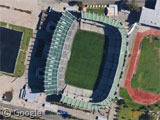
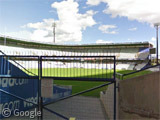
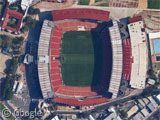
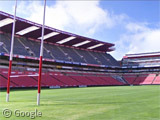
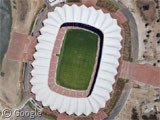
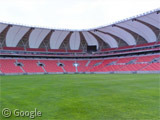
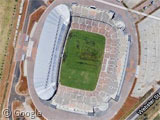
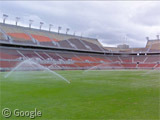
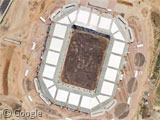
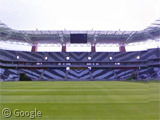
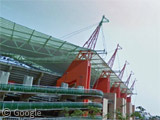
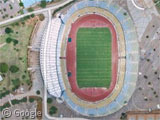
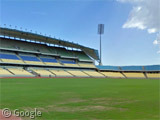
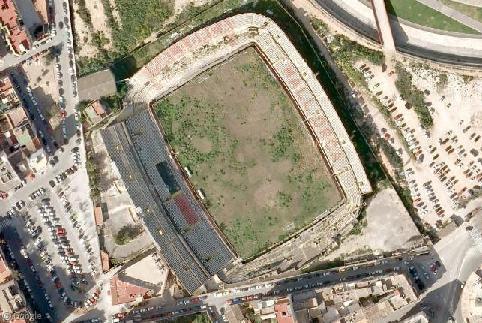
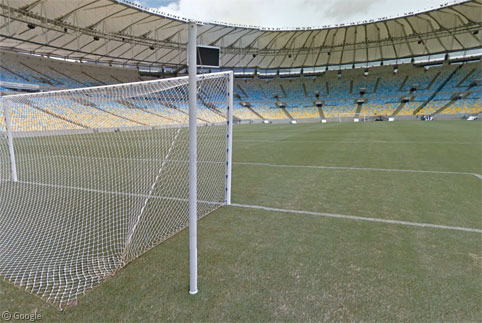
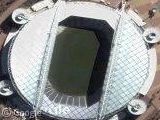
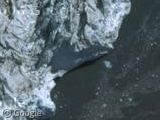
AAHH!! The new layout SUCKS!!!
Hey “Me” – thanks for caring, but if you have feedback on the new design, please either leave it on the news post related to the new design:
https://www.googlesightseeing.com/2010/06/08/google-sightseeing-v3-beta/
Or on our support forum page: http://getsatisfaction.com/gsightseeing
I like the new layout. It seems logically and cleanly laid out.
If I was nitpicking I would reduce the white space at the top of the right hand column moving Welcome to Google Sightseeing level with the article title. I would also move the RSS/Twitter followers box below the Welcome to.. and change the colours/formatting to be more consistent with the rest of the page.
Well done
Moved comment to correct thread
What are the bizarre wire thingies at field level where the seats are? Is that supposed to be some kind of deterrent to fans climbing over each other in a crushing wave to go onto the field and… wreck it, I guess?
If so: FAIL!
That stuff could be barbed wire and wouldn’t help those crazy fans from killing each other (literally).